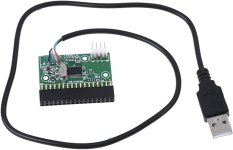GearTechWolf
Experienced Member
Was doing some cleaning (disassembly and running a cleaning-disk through them) and low-level testing (hooking up to a power-supply) of my loose floppy-drives recently, scared up twelve laying around.
Eight of them do a head-to-zero check and/or spin when a floppy is loaded, four do neither.
I know some old/early 5-1/4 drives would only spin/attempt to read a disk when commanded to by the computer, are there also 3-1/2 drives like that?
The four are various makes: A Sony MPF920-Z, an HP D2035-60021/EPSON SMD-1340, an EPSON SMD-300, and an ALPS ELECTRIC DF354H090F.
I will eventually be testing them all hooked up to a computer, but figured I'd seek info here in the mean-time.
Are PC-standard floppies dependent on the controller in the computer for self-testing, do they have some capabilities built-in, or does it vary?
Currently, I'm thinking it's the latter. Thoughts?
Eight of them do a head-to-zero check and/or spin when a floppy is loaded, four do neither.
I know some old/early 5-1/4 drives would only spin/attempt to read a disk when commanded to by the computer, are there also 3-1/2 drives like that?
The four are various makes: A Sony MPF920-Z, an HP D2035-60021/EPSON SMD-1340, an EPSON SMD-300, and an ALPS ELECTRIC DF354H090F.
I will eventually be testing them all hooked up to a computer, but figured I'd seek info here in the mean-time.
Are PC-standard floppies dependent on the controller in the computer for self-testing, do they have some capabilities built-in, or does it vary?
Currently, I'm thinking it's the latter. Thoughts?

